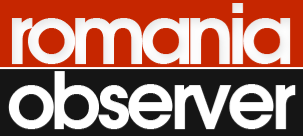* Romania’s Inflation Slows in March and April 2025, but Economic and Political Uncertainty Mounts. The Board of Directors of the National Bank of Romania (BNR) decided to maintain the monetary policy interest rate at 6.5% per annum. The NBR also decided to maintain the interest rate for the lending facility (Lombard) at 7.50 percent per annum and the interest rate for the deposit facility at 5.50 percent per annum and to maintain the current levels of the minimum reserve requirements for lei and foreign currency liabilities of credit institutions. BNR also shows that Romania’s annual inflation rate fell to 4.86% in March 2025, down from 5.02% in February, driven mainly by declines in fuel and energy prices, which outweighed the effects of faster food price growth. In Q1 2025, inflation declined to a lesser extent than expected, moving from 5.14% in December 2024, as lower fuel and tobacco price increases were partially offset by higher energy, regulated, and processed food prices. Core inflation (CORE2 adjusted) also resumed its decline in Q1 2025, though more slowly, reaching 5.2% in March compared to 5.6% in December 2024. Disinflationary pressures came from lower non-food inflation and slower import price growth, while price hikes in some agricultural commodities and higher wage costs had the opposite effect. In April 2025, the headline inflation rate remained stable at 4.85%, amid opposing dynamics: further drops in fuel and tobacco prices and non-food inflation, versus continued increases in food and energy prices, partly due to base effects. Other key inflation indicators also fell: HICP inflation (EU methodology): down to 4.9% in April from 5.5% in December 2024. CPI annual average: 5.0% in April vs. 5.6% in December. HICP annual average: 5.3% in April vs. 5.8% in December. Q1 Economic Activity Flatlines, Trade Deficit Widens Preliminary data point to a standstill in economic growth in Q1 2025, with GDP growth slowing to 0.2% y-o-y, down from 0.5% in Q4 2024. Retail trade decelerated, and household services contracted in Jan–Feb, while construction rebounded strongly—especially in residential and civil engineering. However, industrial output shrank sharply, and the trade deficit widened significantly as import growth far outpaced exports. Labour Market Shows Mixed Signals Employment rose more rapidly in Jan–Feb 2025 than in the previous quarter, and the ILO unemployment rate fell after averaging 5.7% in H2 2024. Nominal gross wages grew at a slower, but still double-digit, pace. However, unit wage costs in industry rose markedly to 16.6%. April surveys indicate declining hiring intentions and a sharp drop in reported labour shortages. Markets React to Political Tensions Financial conditions remained stable through April but worsened after the first round of presidential elections, with: Interbank rates and government bond yields surging—especially for short maturities. The EUR/RON exchange rate spiking and stabilizing at a higher level. The USD/RON rate climbing even faster, tracking global USD strength. Private sector credit growth slowed to 9.2% in March, mainly due to reduced lending to non-financial companies. Household lending in lei, particularly for mortgages, remained strong. The share of leu-denominated credit increased slightly to 70.0%. The prolonged electoral period and rising political tensions have triggered increased capital outflows, affecting liquidity, exchange rates, and FX reserves. NBR Holds Policy Rate Steady, Cites Elevated Risks In its May 16 meeting, the NBR Board approved the May 2025 Inflation Report, which sees the inflation rate fluctuating until Q3 2025, before declining gradually from Q4 onward—but on a higher path than previously forecast, with inflation only dipping just below the upper bound of the target band by Q1 2026. Key drivers of this trajectory: Disinflationary base effects Slower import price growth A moderate negative output gap A gradual decline in inflation expectations—though still higher than before Key Risks Ahead Risks and uncertainties remain high, especially due to: Volatile energy and food prices, tied to global commodity trends Possible shifts in trade policies among major economies Domestic fiscal and income policy challenges, amid slow budget consolidation Geopolitical tensions, particularly the ongoing wars in Ukraine and the Middle East Uncertainty around EU fund absorption and reform progress Future actions of central banks, especially the ECB, Fed, and regional peers Policy Decisions (as of May 16, 2025) Monetary policy rate: maintained at 6.50% Lending (Lombard) facility rate: unchanged at 7.50% Deposit facility rate: unchanged at 5.50% Minimum reserve requirements: kept unchanged for both RON and FX liabilities The NBR Board reaffirmed its commitment to price stability and sustainable growth, emphasizing the need for a balanced policy mix, structural reforms, and optimal use of EU funds. The Next NBR Board Meeting will take place on 8 July 2025.

